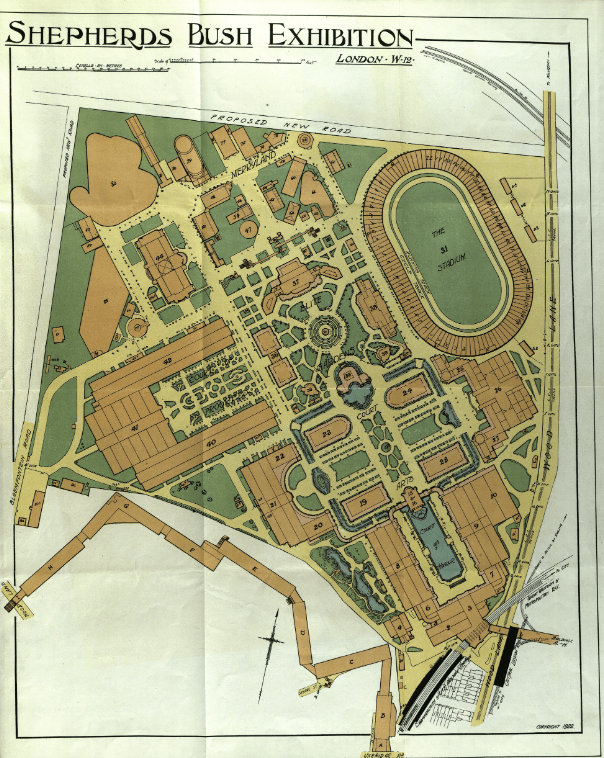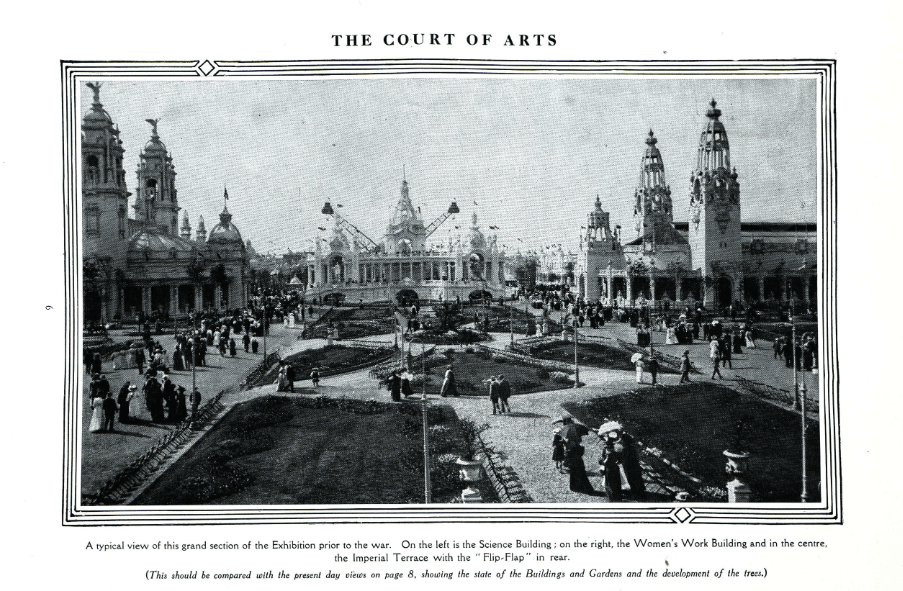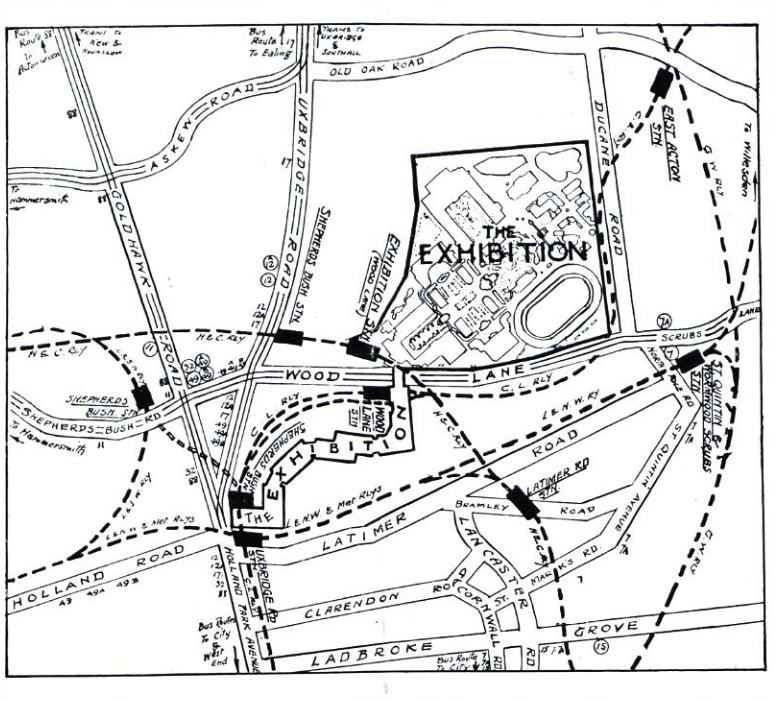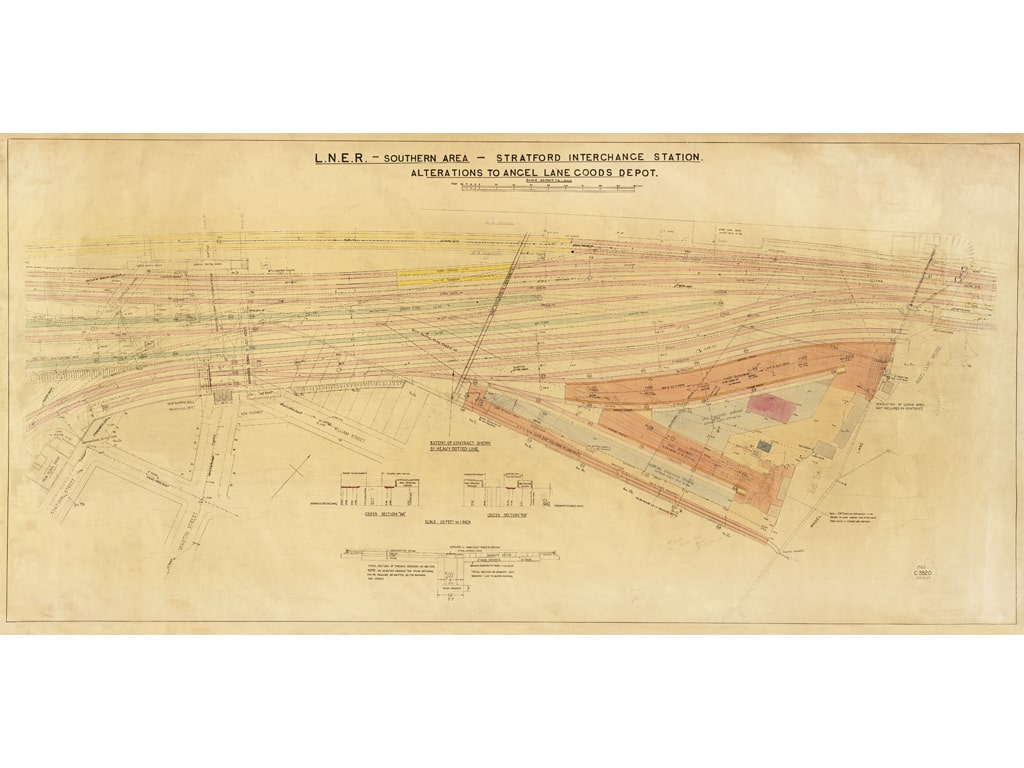We look back at more than 100 years of Olympics history across London’s railway as Tokyo 2020 officially begins …
1908 – White City
London 1908 took place in the shadow of the Franco-British Exhibition, which was considered more noteworthy at the time.
As a result, London’s railway companies were more concerned about transport links for the exhibition, which was held at the same time as the Games – and also at White City.
Vicky Stretch, archivist at Network Rail, said ahead of London 2012: “With everyone focused on this fortnight, it’s fascinating to also look back at how things were different in 1908 and 1948 as the rail sector was quite different then.”
The BBC, which went on to occupy buildings on the White City site, says: For the Franco-British Exhibition of 1908, 20 huge palaces and 120 exhibition buildings were built on a 140-acre site by a workforce of 120,000 men.
“The exhibition was eight times the size of the 1851 Great Exhibition in Hyde Park and showcased the industrial and cultural achievements of England and France. It drew more than eight million visitors. Made of steel and concrete, the ornate buildings were whitewashed, hence the name White City.

“The site also played host to the 1908 Olympic Games. The event was originally to have taken place in Italy. However, when Rome failed to raise the finance to build a stadium, the Games were offered to London, and an Olympic stadium was added to the exhibition plans.”
John Page, records controller at our archive, has found fascinating images of the White City site from its auction in November 1922 by auctioneers Goddard & Smith. White City had fallen into disuse after the Games and was taken over by the Greyhound Racing Association in 1927.


The particulars for the auction highlight:
“Reference to the Railway Plan will reveal the fact that there are FOUR RAILWAY STATIONS ON THE BORDERS of the Estate, namely, Wood Lane, Exhibition, Shepherd’s Bush and Uxbridge Road – in addition to many others close by. Replies to enquiries made show that the Central London, Underground, Metropolitan, L. & N.W. and G.W. Railways alone estimate that they are able to carry to the Exhibition OVER 70,000 VISITORS PER HOUR whilst Trams and Omnibuses pass the Main approaches in large numbers.”
White City was eventually demolished in 1984.
London 1948
The so-called austerity Olympics were more sophisticated, with the newly nationalised British Railways and London transport executives working with the Olympic Games Decorations Sub-Committee to publicise the event.
The Committee provided the railways with special Olympic flags and Olympic shields.
London 2012 – Stratford
Several railway companies were drawn to Stratford, gateway to the Olympic Park built for London 2012, in the first half of the 19th century.
The original station on the site was built in 1839 on the first section of the Eastern Counties Railway mainline to Colchester. Soon after, the North Eastern Railway built a second station and in 1847, the two stations were combined.
In 1846, a third company, the Eastern Counties & Thames Junction Railway, built a line from Stratford to Canning Town and their Stratford Low Level station was added adjacent to the existing stations.
Here’s an original drawing from our archive of the railway station at Stratford:

Read more:
Incredible Windrush generation images brought to life
Refurb of world’s largest working mechanical signal box completes
Why the end of the gauge war didn’t standardise Britain’s railway
Love the railway – heritage railways
Meet Britain’s most remote signal box
What happens to signal boxes when they retire?
The Architecture the Railways Built – Severn Bridge Junction